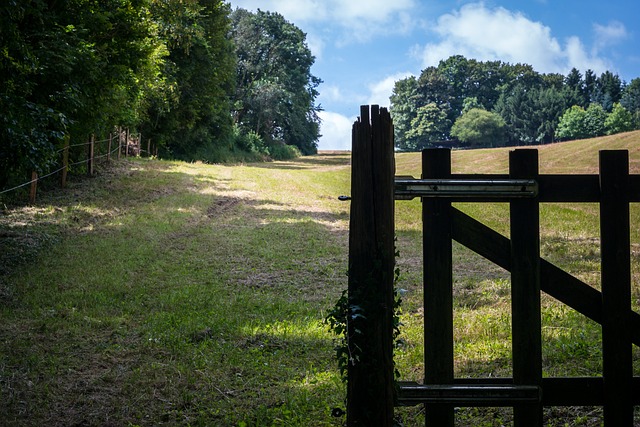Fences serve as both structural elements and design accents in any outdoor space. To maximize their aesthetic appeal and longevity, proper fence staining and sealing are essential. This comprehensive guide explores the benefits of fence staining, from enhancing visual appeal to protecting wood, and offers a step-by-step approach to achieving professional results. We delve into various stain types, color options, application techniques, and sealing methods, providing practical tips for maintaining your wooden fence’s beauty and durability.
- Understanding Fence Staining: Benefits and Types
- Preparing Your Wooden Fence for Staining
- Choosing the Right Stain: Color Options & Application
- Sealing for Protection: Why It's Essential
- Maintenance Tips: Keeping Your Fence Looking New
Understanding Fence Staining: Benefits and Types
Fence staining is a process that involves applying a pigmented sealer or finish to protect and enhance the appearance of wooden fences. It offers numerous benefits, including increased durability, improved resistance to weather conditions, and enhanced aesthetics. By blocking out moisture and UV rays, stains create a protective barrier that prolongs the life of the fence.
There are various types of fence staining options available, each with unique characteristics. Water-based stains are eco-friendly, fast-drying, and easy to apply but may require more frequent reapplication. Oil-based stains provide deeper color and superior water resistance, making them ideal for harsher climates. Solid color stains offer a wide range of vibrant hues while semi-transparent options allow the natural wood grain to peek through, adding subtle character to your fence.
Preparing Your Wooden Fence for Staining
Before applying stain or sealer to your wooden fence, proper preparation is key. Start by cleaning the fence thoroughly to remove any dirt, dust, and debris that might hinder the staining process. Use a pressure washer or a bristled brush with mild detergent to ensure a clean surface. This step is crucial as it allows the stain to bond better with the wood.
Once cleaned, inspect your fence for any damaged or rotten sections. Repair or replace these areas to maintain the structural integrity of the fence. Sanding the fence slightly can also help smooth out rough surfaces and ensure an even application of the stain. Make sure all tools and equipment are ready, including brushes, rollers, and rags, to efficiently handle the staining process.
Choosing the Right Stain: Color Options & Application
When it comes to enhancing your wooden fence with stain, the first step is selecting the perfect shade. The market offers a vast array of options, from natural wood tones to vibrant colors, each suited for different styles and preferences. Consider the overall aesthetic you wish to achieve – whether you want to highlight the natural grain of the wood or create a bold statement.
Application methods also vary, with some stains designed for brushing on, while others are best applied with a rag or roller. The chosen method depends on personal preference and the fence’s surface. Always follow the manufacturer’s instructions for achieving optimal results and longevity of the stain on your wooden fence.
Sealing for Protection: Why It's Essential
Wooden fences, when left unprotected, are vulnerable to the elements and can quickly show signs of wear and tear. Sealing is an essential step in fence maintenance that offers a protective layer against moisture, UV rays, and other environmental factors. It creates a barrier, preventing water penetration and limiting the growth of fungi, mold, and mildew—all of which can cause significant damage to the wood over time.
By sealing your wooden fence, you’re not just enhancing its aesthetic appeal but also extending its lifespan. A good seal can protect the fence from cracking, splitting, and warping, ensuring it remains strong and sturdy for years to come. This is particularly important for exterior spaces where fences are exposed to constant sunlight, rain, and other weather conditions, making them more prone to damage without proper protection.
Maintenance Tips: Keeping Your Fence Looking New
Regular maintenance is key to keeping your wooden fence looking new and lasting for years to come. After initial staining or sealing, establish a routine that includes annual cleaning and reapplication of sealer. Springtime is an ideal time for this task, as the warmer weather allows for faster drying times. Start by pressure washing the fence to remove any built-up dirt, mold, or mildew. This step is crucial as it ensures your new coat of sealer adheres properly. Avoid using harsh chemicals, as they can strip away the existing finish and cause damage.
Once clean, assess any areas that show signs of wear or fading. Touch up these spots with a fresh coat of stain to maintain an even color. Keep in mind that regular maintenance not only extends the life of your fence but also adds value to your property. A well-maintained wooden fence can enhance the overall curb appeal and beauty of your outdoor space.
